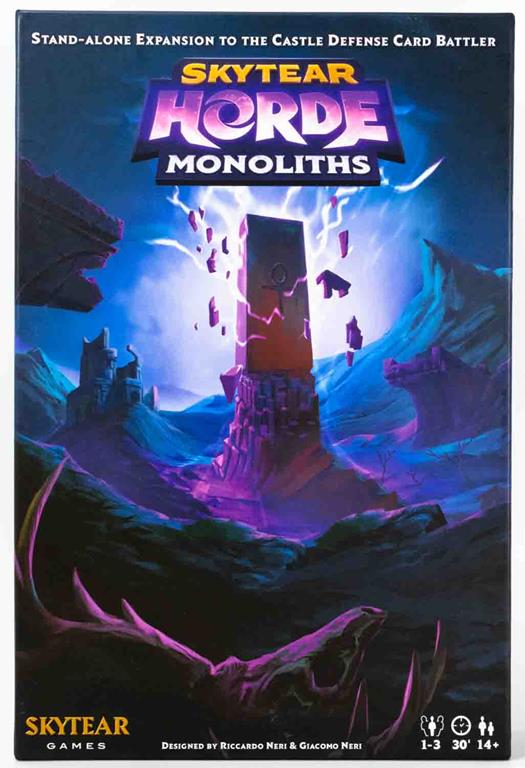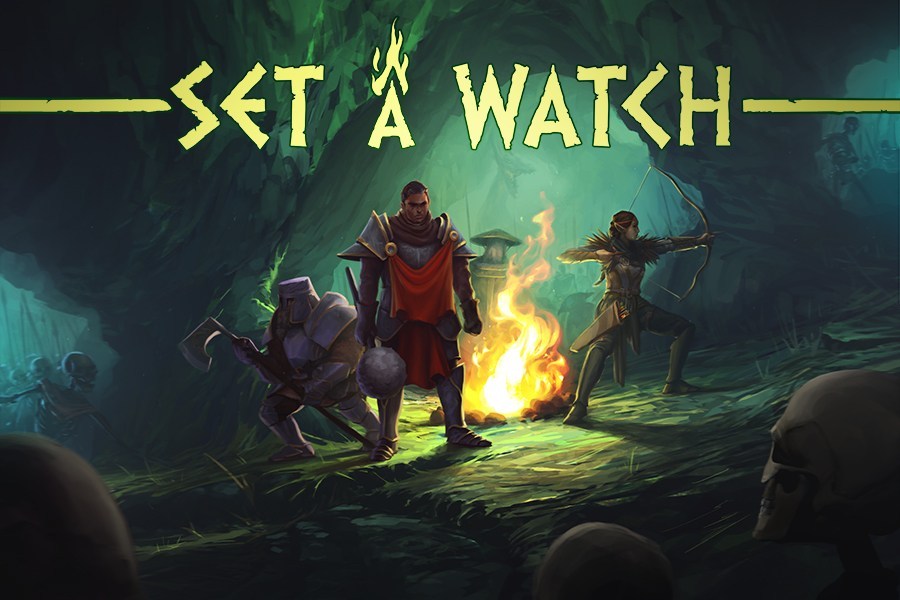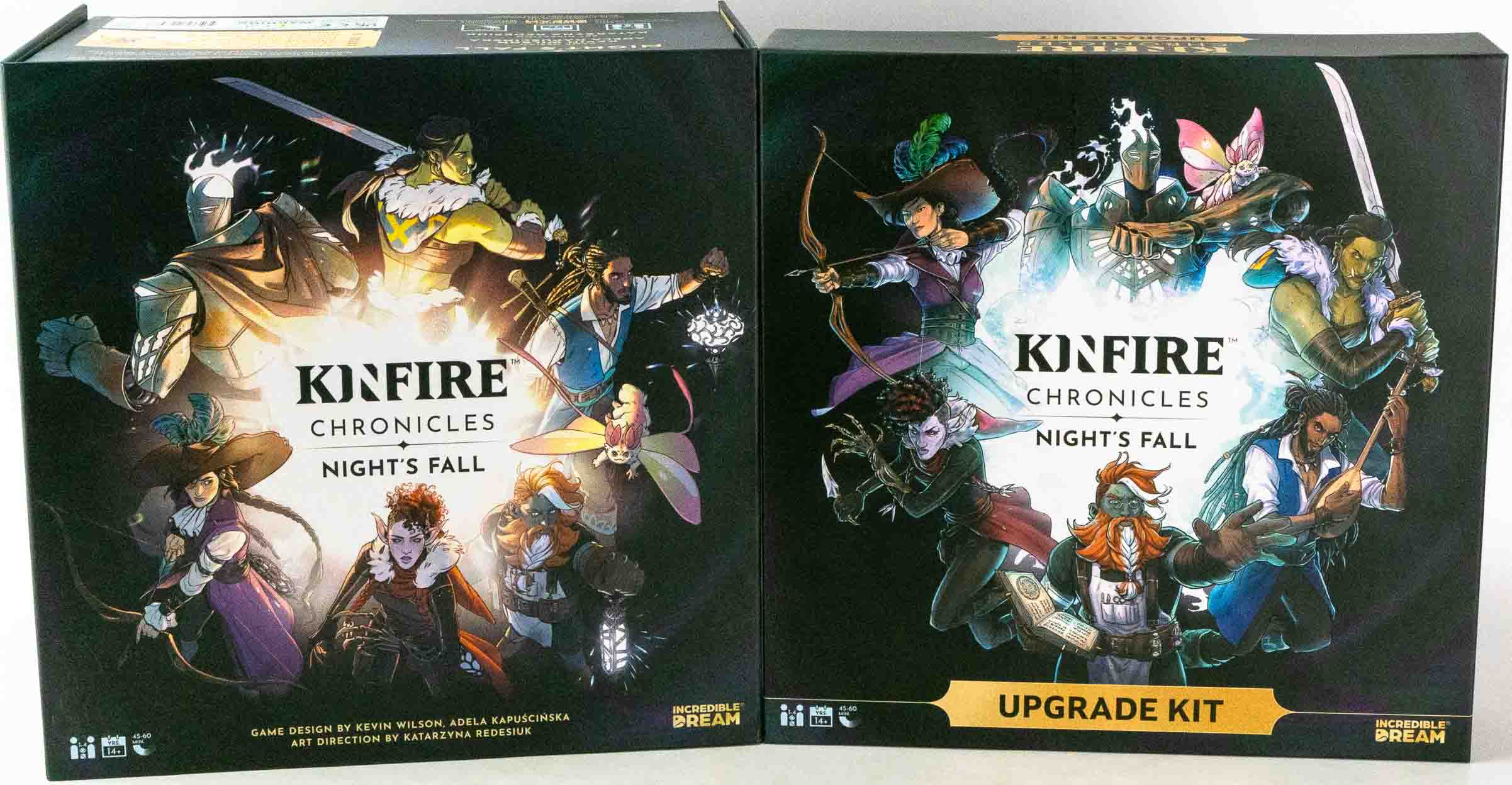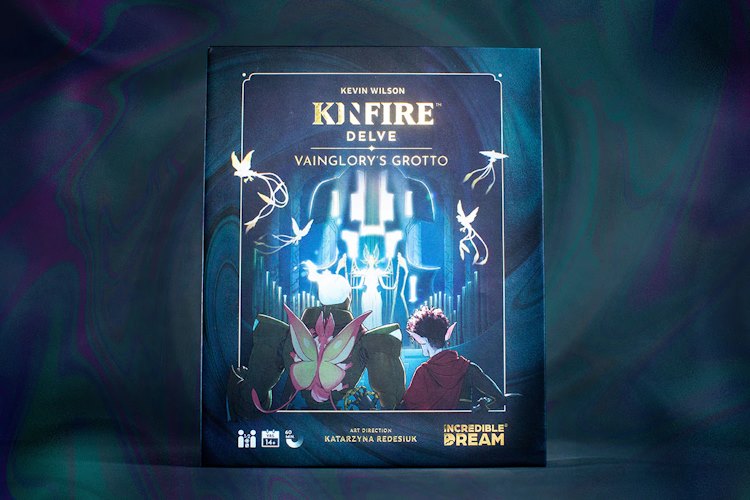Curling up with a good fantasy novel is one of life’s sublime pleasures, just you, your imagination, and a fantastic story. Sitting down to an excellent solo fantasy board game is much the same, only you’re leaning into a more emergent narrative, one under your direct control. Well, except for the dice, and the card draws, and the machinations of your insidious adversaries. Every genre of solo gaming has been getting better over the years, and fantasy is no different, so if you’ve a love of adventure, of discovering magic, and defeating terrible monsters, then read on.
Oh, and if you’d prefer to play these with a friend, every game we’re talking about today plays well with a duo (or more) too!
Skytear Horde
Combine Magic with Space Invaders and you might wind up with Skytear Horde, a lane-based solo or cooperative card game (there is a competitive mode that sees the  enemy controlled by a player, should that fancy you) that has you defending your lands from terrifying invaders. Recently buffed with its Skytear Horde: Monoliths expansion, this game boasts whimsical fantasy art, fast setup, and crunchy tactical decisions.
enemy controlled by a player, should that fancy you) that has you defending your lands from terrifying invaders. Recently buffed with its Skytear Horde: Monoliths expansion, this game boasts whimsical fantasy art, fast setup, and crunchy tactical decisions.
See, you have six lanes to defend, and they will be, constantly, under assault.
A game of Skytear Horde starts with the first of many choices: who you’ll be, and who you’ll be playing against. You might choose, say, the Liothan Shapeshifters, and embrace their force flexibility (see: shapeshifter) in tackling an adversary, an enemy you’ll also pick. Maybe you’ll go up against the skeletons and demonic Oni of the Undead, or the rebellious traitors in the Renegade faction. Every deck is unique, though after a few plays you’re free to mix and match, building your own combos to field against the enemy.
Once you’ve picked decks, gameplay proceeds swiftly, with monsters and heroes deploying across the lanes to thwack each other, activate abilities, and raid resources. That latter bit adds spice to Skytear Horde, as adversaries might attack your castle directly, which more or less matches your life in Magic, or set about pillaging your deck and forcing discards. You’ll often have to balance which to preserve, while also deciding how to allocate your own offense. See, drawing new cards to play comes about, mainly, through the destruction of enemy forces. Bonk a goblin, draw a card. Good stuff. Typical solo fantasy board game!
But this isn’t just a siege.
Skytear Horde encourages offense too. See, the monsters aren’t just motivated to maraud on their own. There’s a villainous hero out there that, if put six feet under, will get you the win. Or you can put together a raiding force and go after the portal letting all those nasty creatures waltz to your front door. Going on the attack is profitable, but how much support can you pull away from survival to succeed?
All these decisions dash out in under an hour, particularly when playing solo. Skytear Horde keeps its rules simple, so aside from occasional keyword checks, you won’t be buried in the rulebook. This keeps things moving, the action steady, and the thrill of victory or ignominious defeat close at hand. It’s also svelte enough to be portable, viable to take on a road trip or set up for a lunch time session in the office break room. That latter bit is also where the cooperative option comes in handy: if a pal’s interested, it’s easy to ramp up the game to deal them in.
Skytear Horde: Monoliths bears discussing here too, as it arrived in 2024 and revamps Skytear Horde largely for the better. If the original was a solid solo title, Monoliths spruces it up to a great game. Beyond rules updates to streamline things, Monoliths adds new factions, new difficulty modes, and better interaction between your own creatures, enhancing the tactical lane positioning piece. There’s also a small campaign option to link sessions together, if that’s your thing.
All told, if you like Magic and other TCGs and want a way to play something similar with a solo or cooperative setup, then Skytear Horde is your answer. I’d start with Monoliths and expand into the original and other factions as you play your way through. You’re going to have a blast on this solo fantasy board game.
Set A Watch
Set A Watch puts you in the deadly drama of the overnight, the quiet hours when one hero is tending to the camp and the others are… slaying the invading hordes? Yep, that’s definitely a parade of lichs, werewolves, and zombies busting up a nice evening around the fire. Who needs sleep anyway?
Okay, strip away the set dressing and what we’re looking at here is a compelling hero-driven fantasy puzzle. Technically playable with up to four, Set A Watch sings in solo. You’ll have unique heroes, but their actions and possibilities aren’t so involved as to make management hard. Instead, you can wizard your way into each night, assembling your abilities and the monsters drawn from a deadly deck like so many satisfying pieces to arrange. See, these monsters are kind enough to head towards your camp in a pleasant line, letting you gauge which threats need to be dealt with first and with what.
in solo. You’ll have unique heroes, but their actions and possibilities aren’t so involved as to make management hard. Instead, you can wizard your way into each night, assembling your abilities and the monsters drawn from a deadly deck like so many satisfying pieces to arrange. See, these monsters are kind enough to head towards your camp in a pleasant line, letting you gauge which threats need to be dealt with first and with what.
Your goal is simple: survive. Every hero (and monster) has health, and if the good guys bite it, you’re done. Damage is largely dealt to your team when monsters barrel into camp or trigger abilities, while you return the favor via attack dice. Your ranger, for example, might be able to shoot a monster further back that’s boosting all the evil health, which will let the Knight skewer that goblin right in front. Roll, ruin, advance. So simple, so slaughter.
What gives Set a Watch its oomph comes from the hero not in the fight. I mentioned you’ll have four heroes, but only three get to partake in the battles. The fourth has the most crucial job of all: keeping the campfire lit, among other support shenanigans. The campfire’s brightness determines how deep into the dark you can see, and thus, how many monsters are revealed before they’re right on your doorstep. You don’t want that beefy troll appearing on your bedroll without a few arrows striking home first.
Set a Watch throws some more fun in the mix too, as every round happens at a unique location with battle-altering effects. Maybe using all your abilities will draw new monsters to the fray, or the undead get a chance to spawn more pals, the way zombies tend to. Your efforts at each location impact the rest of the game too, as you’ll play through up to nine (assuming you survive), and the more monsters you clear earlier on, the fewer you’ll face at the end. The hero you pick to man the campfire rotates too, and some are better than others at keeping the fire burning bright, so timing their turn is key.
All these elements blend together in a fast-paced, smooth game that’s not as stuffed with keywords as others of its ilk. Setup, thanks to stellar components and a slim box, is a breeze, meaning a solo play can be in and out in an hour. Like Skytear: Horde, Set a Watch is a great way to end the night or dodge the phone during a lunch break.
Since originally releasing a few years back, Set a Watch has received a couple of expansions that can be played stand-alone or combined. The core game gets you five heroes and a bunch of content, and the two follow-ons, Swords of the Coin and Forsaken Isles, match it. These games are designed with nifty wrap-around boxes, perfect for traveling.
And if you’ve already played Set a Watch or want to go all in, then, after acquiring all three boxes above, you can dive into the new Set a Watch: Doomed Run, which uses all of the Set a Watch content to create a replayable campaign, complete with envelopes to open, adventurers to unlock, and full voice narration via Foreteller. Doomed Run turns Set a Watch into a more substantial time investment, but if you love the game, then it’s a great way to bring it to new life as a solo fantasy board game.
Kinfire Delve
If you’re tapped into the cooperative dungeon crawler scene, you may have noticed 2023’s Kinfire Chronicles: Night’s Fall, a cracking adventure heavy on heroes  helping heroes while scrambling about a unique storybook-style board. Those same folks, also in 2023, began publishing a series of games under the Kinfire Delve series, consisting now of three titles whose contents can be mixed and matched at will. These are Kinfire Delve: Vainglory’s Grotto, Kinfire Delve: Callous’ Lab, and Kinfire Delve: Scorn’s Stockade. These thematic, card-driven dungeon crawls are designed for 1-2 players, hit that sweet hour-long runtime per session, and pack tons of variability into around a hundred cards per box (and there are three).
helping heroes while scrambling about a unique storybook-style board. Those same folks, also in 2023, began publishing a series of games under the Kinfire Delve series, consisting now of three titles whose contents can be mixed and matched at will. These are Kinfire Delve: Vainglory’s Grotto, Kinfire Delve: Callous’ Lab, and Kinfire Delve: Scorn’s Stockade. These thematic, card-driven dungeon crawls are designed for 1-2 players, hit that sweet hour-long runtime per session, and pack tons of variability into around a hundred cards per box (and there are three).
The core gameplay runs like this: you’ll pick a hero, and there’s two per box, and a villain (one per box), then get after it. As you might expect for a dungeon crawl, you have to work your way to the evildoer by getting through monsters and traps, all considered ‘challenges’. You’ll draw cards from your hero’s deck, needing to play those cards to dash past, defeat, or disable your way forward. You’ll aim to play cards matching the challenge (red to defeat red, and so on), rolling a dice to find success, and receiving rewards or suffering damage depending on the result. If you play cooperatively or handle multiple heroes, they can help each other by burning cards, but emptying hands comes with variable exhaustion penalties, so plotting the best time to slip the knife into the monster’s back is key.
Survive long enough and you’ll reach the big bad, whose battle is appropriately epic while also smartly designed. You won’t see much more than a quarter of the boss’s abilities in a single playthrough, ensuring a different mix every time. For a game as smooth and swift as Kinfire Delve, the nods towards replayability are key. The card art and amusing collection of enemies and traps go a long way too – you won’t just be knocking goblins on the head for the fiftieth time, but Drider-like spider critters, demonic puppets, sentient flowers with claws, and, naturally, hermit crabs. The beautiful, cohesive style makes Kinfire’s world a pleasure to play in, even when the going gets rough.
Diving into Kinfire Delve is best done with the opening set. Vainglory’s Grotto is the easiest (though by no means easy) of the three, and its two heroes, the defender and the finisher, combo well with one another for two-handed or cooperative play. From there, expanding to the other two is a matter of desire: what’s the setting you’d prefer?
and the finisher, combo well with one another for two-handed or cooperative play. From there, expanding to the other two is a matter of desire: what’s the setting you’d prefer?
Though, once this game has its claws in you, you’ll likely wind up with the whole set. Then, should you be feeling a bit wild, you can cram up to four of the heroes together for a massive cooperative (or brain-melting solo) run to get a unique challenge.
Really, that’s what’s excellent about this solo fantasy board game. They’re always ready to show you something new, whether that’s a challenge, a combo, or an unexpected twist. Throw a copy in your backpack, briefcase, or travel bag and you’ll never be bored. You’ll get action, adventure, and story in an hour or less, a perfect way to add a touch of magic to your day.
Read our previous article here!
